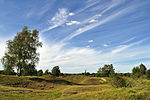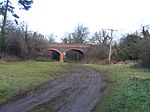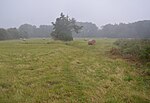Barnack

Barnack is a village and civil parish in the Peterborough unitary authority of the ceremonial county of Cambridgeshire, England and the historic county of Northamptonshire. Barnack is in the north-west of the unitary authority, 3.5 miles (5.6 km) south-east of Stamford, Lincolnshire. The parish includes the hamlet of Pilsgate about 1 mile (1.6 km) northwest of Barnack. Both Barnack and Pilsgate are on the B1443 road. The 2011 Census recorded a parish population of 931.Barnack is historically part of the Soke of Peterborough, which was associated with Northamptonshire but had its own County Council from 1888 until 1965. From 1894 until 1965 there was a Barnack Rural District that was a subdivision of the Soke, and which formed part of Huntingdon and Peterborough until 1974.Barnack is notable for its former limestone industry, its Anglo-Saxon parish church and an unusual early Bronze Age burial. Hills and Holes, an area of Roman and later quarrying, is now a nature reserve.
Excerpt from the Wikipedia article Barnack (License: CC BY-SA 3.0, Authors, Images).Barnack
Main Street,
Geographical coordinates (GPS) Address Nearby Places Show on map
Geographical coordinates (GPS)
| Latitude | Longitude |
|---|---|
| N 52.633 ° | E -0.407 ° |
Address
Barnack Parish Church
Main Street
PE9 3EA
England, United Kingdom
Open on Google Maps










